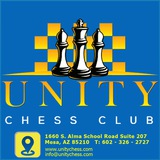Rxf6 is a familiar positional exchange sac which often also targets the enemy king.
Black has just retreated his knight from b4 and White now seized his chance:
In three moves, including the exchange sac, White has established a superb knight on d5 : a perfect post from which to target Black's weakened kingside. White has ample compensation and is clearly better, even close to winning.
21...Bxd5 22.Nxd5 Bg7 23.Bc3 Re6 24.Nxf6+ Bxf6 25.Bxf6 Kf8 26.Rf1 Ke8 27.Qg4 Kd7 28.Qg7 Kc7 29.Qxh7
White has regained his material with simple moves. The bishop on f6 is not in any way worse than any of the black rooks and it will clearly support the advance of the passed h-pawn. White won shortly.
With a kingside pawn structure characterized by the move h2-h3 ( ... h7-h6), you should beware of a quick opening of lines (for example, after opposite-side castling, by an advance of the opponent's g pawn) or certain straightforward tactical motifs. For now, we will look into another pattern: a long-term sac on h3 /h6!
You would expect such a bishop sac to be followed up with a rook check on the g-file or at least the queen sortie to h4. Neither is possible here, yet after this quiet queen move White is unable to defend h3 as 17.Kg2 is met by 17...Nf4+, while 17.Kh2 is illegal!
After the game, Vachier-Lagrave declared that he had seen the possibility of 15...Bxh3, but simply felt it could not be correct as White had so many options. So he underestimated his opponent's possibilities: but surely he was familiar with this kind of sacrifice?!
